JEFFERSON COUNTY, Colorado — In 1962, Jerry Gustafson picked up his first camera.
He started shooting school pictures and worked for the local newspaper.
Now 57 years later, The Bull Riding Hall of Fame has inducted Gustafson into the Class of 2019 in the "Legends" category.

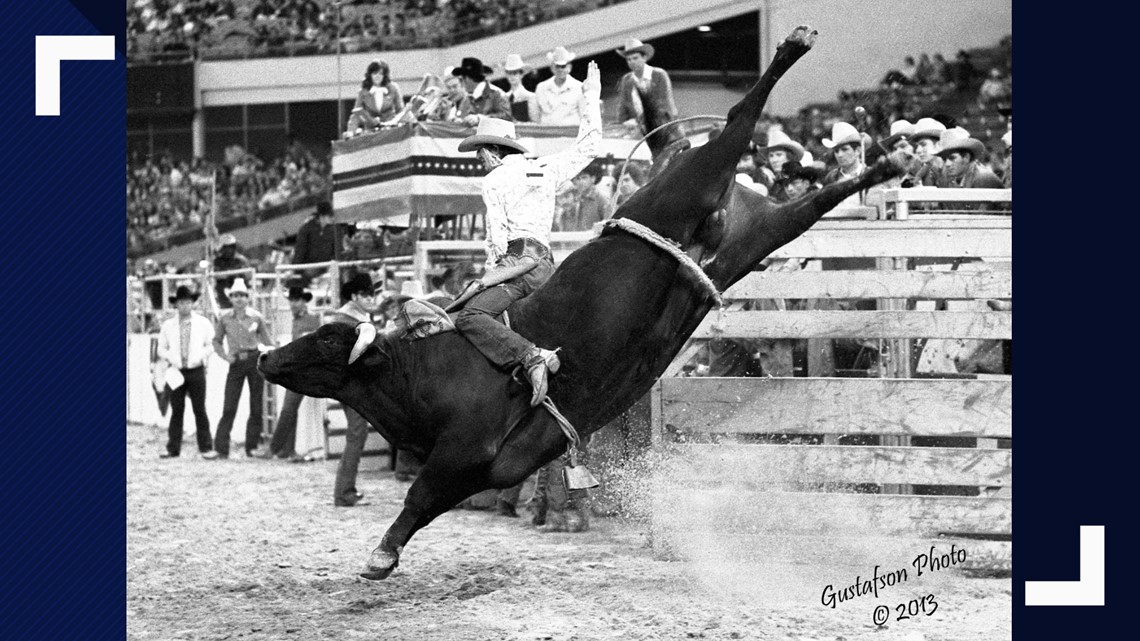
9NEWS sat down with Gustafson to learn more about his path to the Hall of Fame.
(Editor's note: Responses have been edited for context and clarity.)
9NEWS: How did you get into photography?
Gustafson: I first picked up a camera in 1962 as a sophomore in high school to become the first ever high school photographer for my school. That was in Clear Lake, South Dakota.
Initially, it was the school pictures. The local newspaper hired me. I did the photography for the state highway patrol and the Colorado Sheriffs. Over the next few years moved into almost every kind of photography there is. I just found it interesting.
When I first picked up a camera, I’d never ever touched a camera before in my life. It was a Polaroid camera. So, I used it for about a month. Then I spent $576 dollars of my own to buy a camera and flash and learned how to develop and print pictures. A month after I bought that camera, I had to submit my entries for a competition. I was chosen as the South Dakota state high school press association photographer.

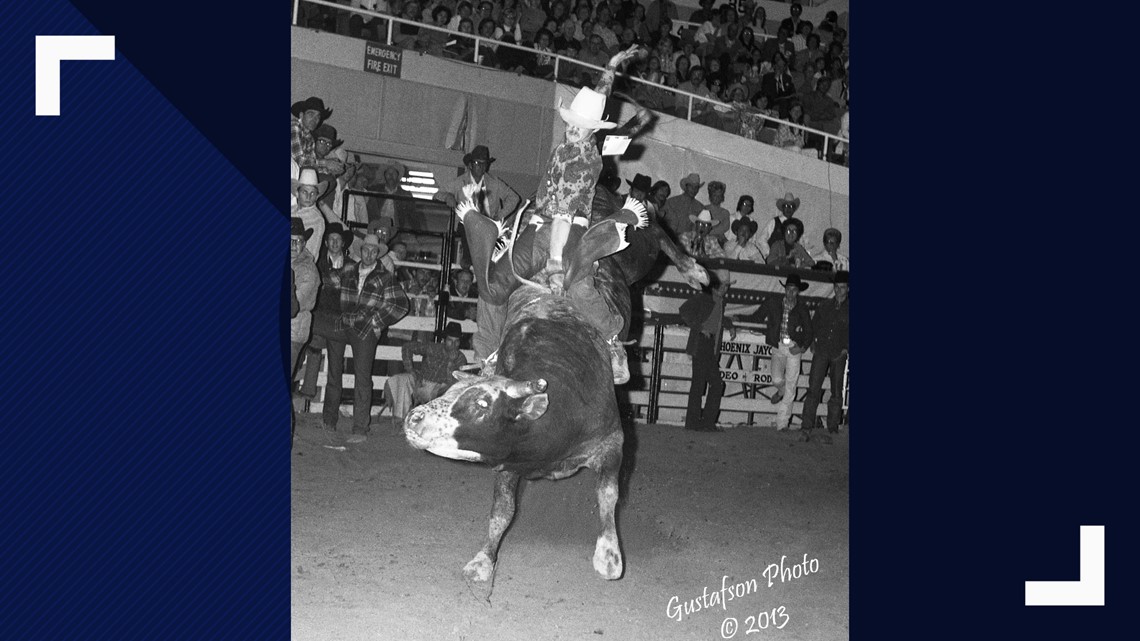
How did you move into photographing Rodeos?
I had gotten into almost every type of photography there is. Once you master the technique, they become very boring because it’s very routine. So, I wondered if I could combine my love of the sport of rodeo with my photography.
So, I went to a college rodeo in Brookings, South Dakota and shot my first rodeo. In three performances I got one decent picture.
What did you do to improve?
I bought a book of DeVere Helfrich’s rodeo photography and learned what my pictures should look like. Over the next couple of years, I shot small rodeos in South Dakota, Minnesota, Wisconsin and Iowa and tried to emulate his style. DeVere Helfrich was the grandfather of modern rodeo photography and his influence is still felt today.

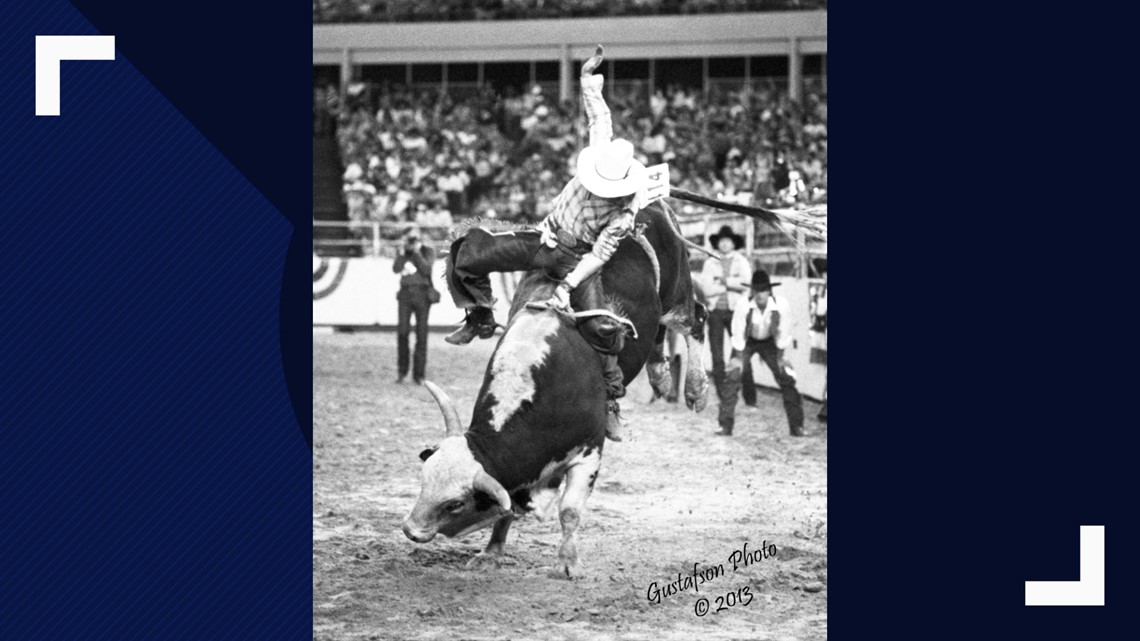
When did you learn you would be inducted into The Bull Riding Hall of Fame?
They announced that in January and I was inducted on May 18th. I was inducted in the Legend’s category. Uh, I don’t think of myself that way. I was very, very surprised and I’m still riding an emotional high from my induction.
What was the ceremony like?
One of the neatest things was I got to see cowboys I hadn’t seen for 30 or 40 years. Being inducted with the Class of 2019 was especially meaningful because, except for one bull rider who was before my time, all of the other bull riders going in were the cowboys I chased up and down the highways for years.
How much did you travel for the perfect photo?
In the 1970s we traveled full-time except for four days over Christmas. I towed a 25-foot travel trailer and had my darkroom in the back. When my son was born in 1972, by the time he was six months old, he’d been in 19 states and traveled 50,000 miles. By the time he was 9 months old, he’d traveled 75,000 miles and been in 21 states.


What was it like to travel with your family?
Half of this buckle belongs to my wife because while I was in the darkroom, she was doing all of the cooking, cleaning, laundry, taking care of our infant son, writing up our proof sheets and packaging orders, and manning our photo display. I couldn’t have done it without her.
Do you have a photograph that's more memorable than the others?
Barney Brehmer on P11 at Sidney, Iowa in 1972. During that performance, there was a storm rolling in. It was so dark that the street lights came on and the cars were driving with their headlights on. When I got that picture, I knew I had something special. So, I processed the film in a special way to make sure that it turned out.

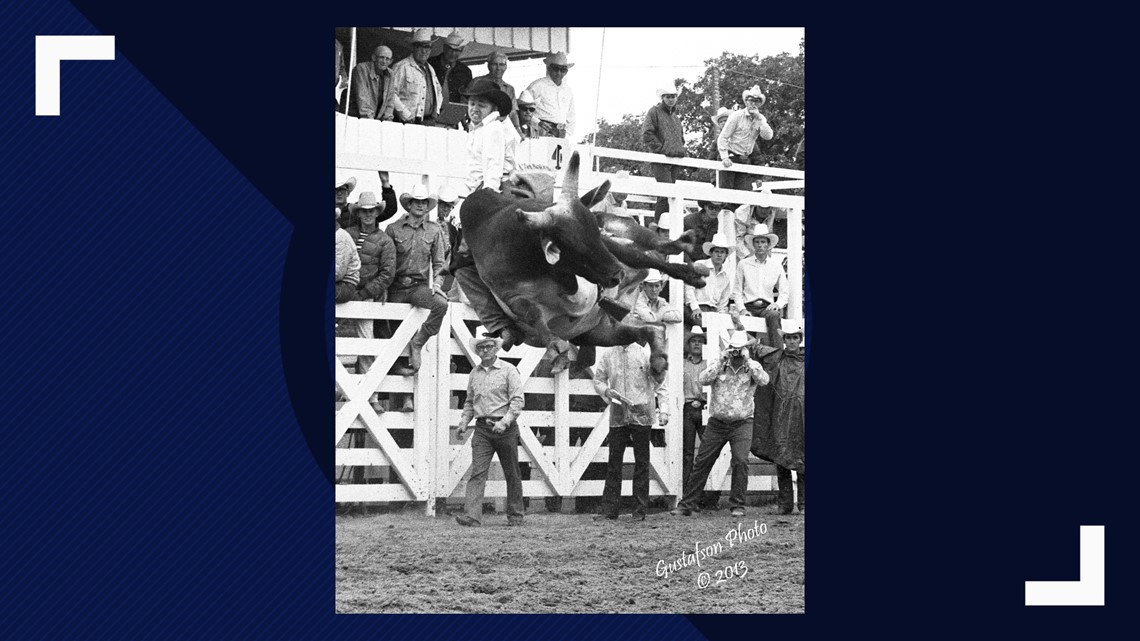
Who was your favorite bull rider to photograph?
That would be a long, long list. Any of the top 50 bull riders were fun to shoot, fun to be around. Same way with the livestock. The livestock has a personality, too. You just get to know them and how to work with them safely.
Did you ever witness any accidents when you were in the arena?
I’ve seen contestants get killed in the rodeo arena and injuries that are just absolutely horrible but that’s the risk they take, and they know it.
Were you ever injured?
I was at a rodeo in Fallon, Nevada one year when a bull hooked me and threw me about 15 feet in the air and over the fence. I landed on my head on hard packed dirt. I got a concussion, broke the lens on my camera, and missed two rides while I was replacing the lens.
It’s not a fear. Same with the bull riders, you know what can happen, but you don’t expect it to happen, but you accept it if it does.
What do you think the future of bull riding looks like?
Bull riding is becoming one of the major sports in the world, not just the United States. The PBR, Professional Bull Riding, is the ultimate level of bull riding. They are in Brazil, Mexico, Australia, and Canada. The PBR is growing by leaps and bounds and there are others out there too. Rodeo, as a sport, is actually kind of diminishing because we’re losing our bareback and saddle bronc riders.

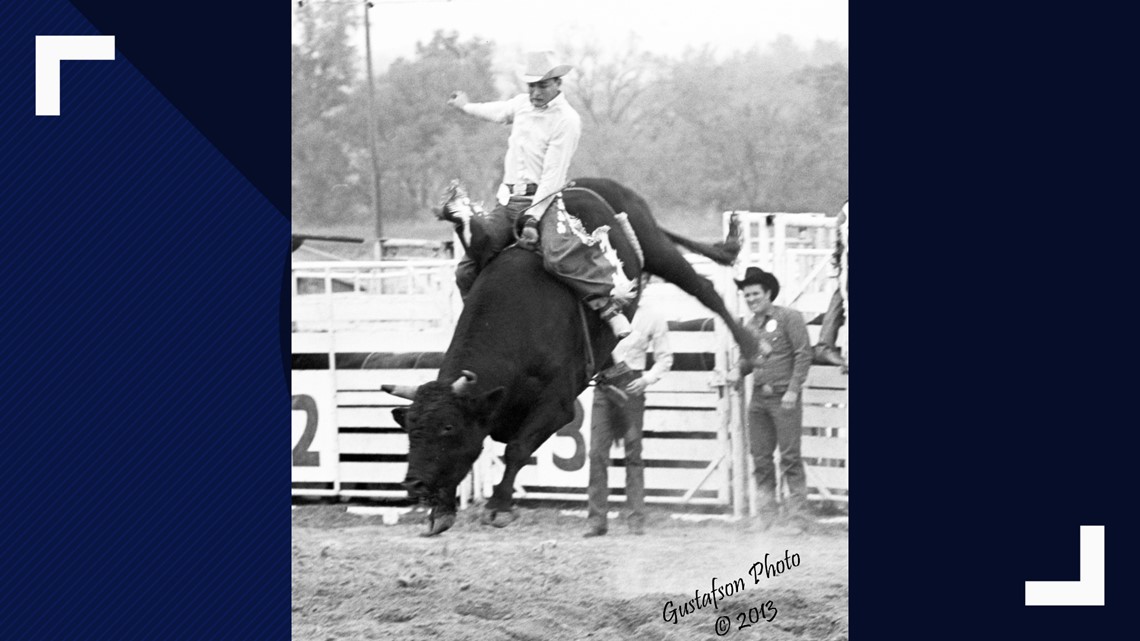
You said you took a break to help raise your son. What brought you back?
I returned to my rodeo photography in 2017. I shot several high school and amateur rodeos in Colorado and South Dakota but had to retire again at the end of the year. People just weren’t ordering prints because every mother has a cell phone. A lot of the top rodeo photographers today are paid by the committee to shoot the rodeo. Then the rodeo has use of all of the photos they’ve taken.
What do you miss the most about photographing rodeos?
First, I miss the challenge of getting that perfect picture. I also miss all of the friendships we developed over the years and I miss the days when the bull riders used to refer to me as the tall, skinny rodeo photographer.
What advice do you have for aspiring rodeo photographers?
If they want to get into rodeo photography, they need to study the top rodeo photographers that are out there, Ferrell Butler, Dale Miller, Fred Nyulassy, and Phillip Kitts. There are several out there. The best thing they can do is study their photographs to see what they should be striving to capture.
SUGGESTED VIDEOS | Next with Kyle Clark

